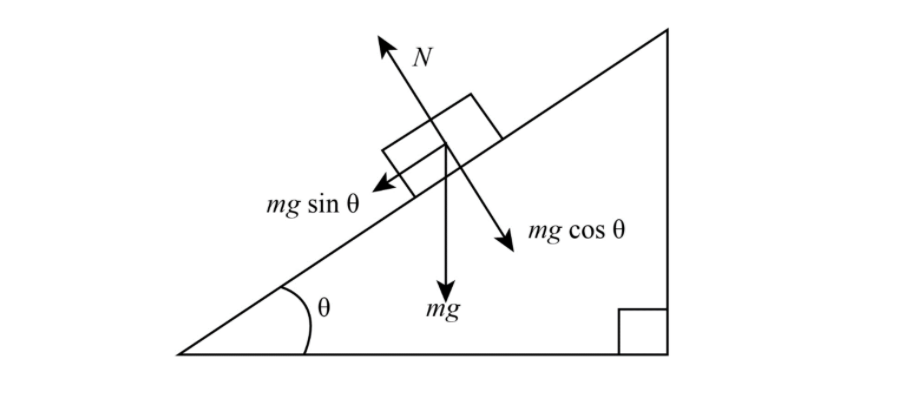
A coolie X is carrying a load on his head climbs up a slope and another Y carrying the identical load on his head moves the same distance on the frictionless horizontal platform. Who does more work?
A. X
B. Y
C. Both A and B.
D. Cannot say
Answer
582k+ views
Hint: The amount of work done strongly depends on the angle between the force and displacement.
Complete step by step answer:
Refer to the figure below for an object moving up the inclined plane:

Ability to do work is called energy and the energy dissipated is equal to work done.
Express the relation for work done:
$W = F\,s\cos \theta $
Here $W$ is the work done, $F$ is the force acting on the body, $s$ is the displacement and $\theta $ is the angle between the force and the displacement.
In case of Y when it is moving on a flat surface the angle between force and displacement is $90^\circ $, and $N$ is equal to normal reaction.
Therefore, the work done in case of Y becomes,
$
W = F\,\times s \times\cos 90^\circ \\
W = m\,g\,\times s \times\cos 90^\circ \\
W = 0 \\
$
Here, $m$ is the mass of the body and $g$ is the acceleration due to gravity.
Whereas, in case of X, the force and displacement are not perpendicular. Therefore,
$W \ne 0$
Therefore, X does more work as compared to Y.
Hence the correct option is (A).
Note: Work done by X while moving up the slope is, $W = (F - mg\sin \theta ) \times s$. When X is moving up the slope, it has to encounter friction down the slope and has to work against gravity. But Y is moving on a frictionless surface.
Complete step by step answer:
Refer to the figure below for an object moving up the inclined plane:

Ability to do work is called energy and the energy dissipated is equal to work done.
Express the relation for work done:
$W = F\,s\cos \theta $
Here $W$ is the work done, $F$ is the force acting on the body, $s$ is the displacement and $\theta $ is the angle between the force and the displacement.
In case of Y when it is moving on a flat surface the angle between force and displacement is $90^\circ $, and $N$ is equal to normal reaction.
Therefore, the work done in case of Y becomes,
$
W = F\,\times s \times\cos 90^\circ \\
W = m\,g\,\times s \times\cos 90^\circ \\
W = 0 \\
$
Here, $m$ is the mass of the body and $g$ is the acceleration due to gravity.
Whereas, in case of X, the force and displacement are not perpendicular. Therefore,
$W \ne 0$
Therefore, X does more work as compared to Y.
Hence the correct option is (A).
Note: Work done by X while moving up the slope is, $W = (F - mg\sin \theta ) \times s$. When X is moving up the slope, it has to encounter friction down the slope and has to work against gravity. But Y is moving on a frictionless surface.
Recently Updated Pages
Master Class 12 Business Studies: Engaging Questions & Answers for Success

Master Class 12 Economics: Engaging Questions & Answers for Success

Master Class 12 English: Engaging Questions & Answers for Success

Master Class 12 Maths: Engaging Questions & Answers for Success

Master Class 12 Social Science: Engaging Questions & Answers for Success

Master Class 12 Chemistry: Engaging Questions & Answers for Success

Trending doubts
What is meant by exothermic and endothermic reactions class 11 chemistry CBSE

Which animal has three hearts class 11 biology CBSE

10 examples of friction in our daily life

One Metric ton is equal to kg A 10000 B 1000 C 100 class 11 physics CBSE

1 Quintal is equal to a 110 kg b 10 kg c 100kg d 1000 class 11 physics CBSE

Difference Between Prokaryotic Cells and Eukaryotic Cells




